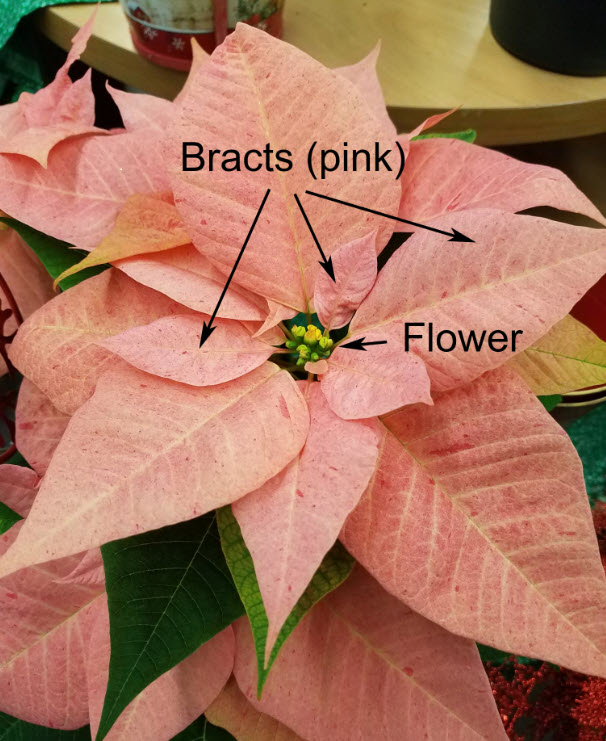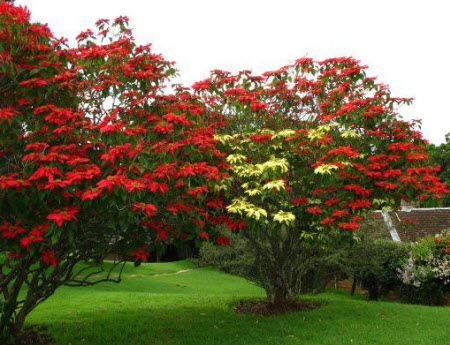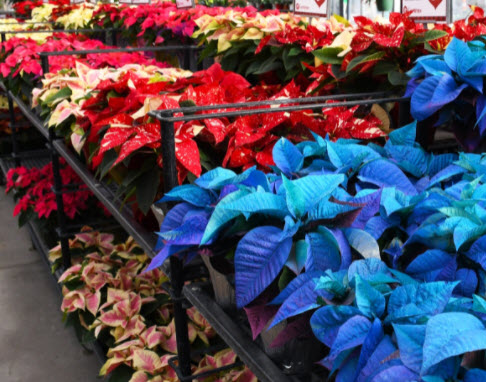Click below to listen to my 2 min. Garden Bite radio show/podcast: National Poinsettia Day and the Legend
Audio PlayerThe quintessential plant of the holiday season is due in part to Joel Roberts Poinsett who was the first U.S. diplomat to Mexico.

He took a fancy to the plant in 1828 and sent samples back home. Euphorbia pulcherrima was used by the Aztecs for dyes and medicines.

Spanish Catholicism made the connection to Christmas due to the leaves that were said to be shaped like the Star of Bethlehem and the red color representing the blood of Jesus.
Mexican legend holds that those leaves first bloomed red for a poor girl who wanted to bring a gift to the manger scene at the local church but had no money. Her cousin, who walked to the church with her, said “even the most humble gift, if given in love, would be acceptable to Jesus”. So the girl picked the weed and when she laid it at the altar it turned a beautiful bright red. And so the red flowers were called ‘Flowers of the Holy Night”.

Technically they’re not flowers but what’s called bracts or modified leaves. The flowers are those small yellow clusters in the middle of the modified leaves.

It’s also a large shrub when grown in its native habitat reaching up to 15 ft. tall.

Through the years there have been MANY beautiful color variations.

When selecting your poinsettia:
- Look for good color on the actual leaves.
- See that it’s full all the way around.
- Don’t choose the plant that’s been sitting with a plastic sleeve on it for very long. They deteriorate faster.
- Do have your new purchase sleeved before you take it outdoors.
- Blue, purple and other unusually colored poinsettias are painted with a plant dye. They are generally white poinsettias, any new growth will be white or the original color.

And as to the “toxicity” of poinsettias… they are NOT toxic. Here’s more from the University of MN Extension on Poinsettias.
More interesting Poinsettia Facts from the University of Illinois.

